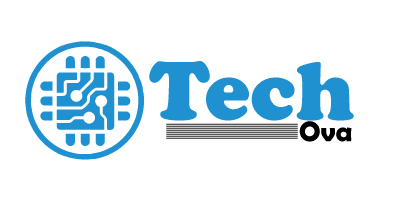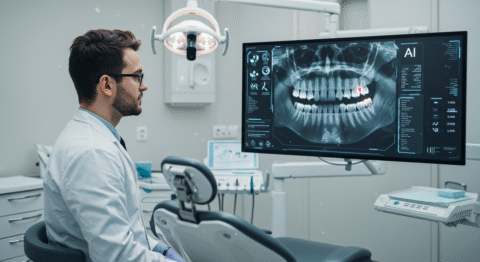Introduction
In the rapidly evolving world of digital health, nerovet ai dental is emerging as a name to watch. By combining advanced algorithms, imaging analysis, and predictive modeling, Nerovet aims to transform how dentists spot issues, plan treatments, and engage patients. In this post, we’ll dive deep into what nerovet ai dental really is, how it works, its benefits and limitations, and how it may reshape the future of oral care.
Every 120 words or so, we’ll revisit “nerovet ai dental” naturally for SEO balance and relevance.
1. What Is Nerovet AI Dental?
At its heart, nerovet ai dental refers to an AI-powered dental platform that leverages artificial intelligence and machine learning to enhance diagnostics, planning, and management in dentistry. Its goal is to assist dental professionals by analyzing imaging data such as X-rays, 3D scans, and intraoral photos. The system integrates patient history and offers predictive insights, increasing accuracy, reducing oversight, and accelerating decision-making.
Essentially, nerovet ai dental acts as a digital assistant or “second opinion” for dentists — precise, consistent, and always available. It can detect cavities, fractures, or gum issues with high accuracy and within seconds, helping practitioners focus on personalized patient care rather than repetitive diagnostics.
2. Core Technologies Behind Nerovet
To understand why nerovet ai dental is transformative, it helps to explore the technologies powering its system.
2.1 Machine Learning & Deep Neural Networks
Convolutional neural networks (CNNs) trained on thousands of dental images recognize features like enamel wear, bone loss, and root pathology. These deep models continuously learn from new data, improving diagnostic precision over time.
2.2 Predictive Analytics & Risk Modeling
Beyond detection, nerovet ai dental can predict disease risk — identifying patients more likely to develop cavities, gum disease, or orthodontic complications.
2.3 Data Integration & Electronic Dental Records
Effective AI tools integrate with patient databases, dental charts, and imaging archives to create context-aware analysis.
2.4 Automated Reporting & Workflow Tools
Nerovet ai dental automates report generation, annotation, and image labeling, saving significant time for practitioners.
2.5 Cloud & Edge Computing
Depending on design, the system can process data via secure cloud servers or on local devices, ensuring speed, privacy, and reliability.
3. Key Applications & Use Cases
3.1 Diagnostic Imaging & Early Detection
- Caries detection: AI identifies even microscopic enamel decay that can be missed by human eyes.
- Bone loss analysis: Automated detection of periodontal bone changes and pocket depth.
- Fracture identification: Spotting minor cracks or root resorption early.
- Pathology alerts: Detecting cysts or lesions that may require further testing.
Nerovet ai dental provides quick, reliable image feedback directly in the clinic, helping dentists make faster and more accurate decisions.
3.2 Treatment Planning & Simulation
- Orthodontic alignment: Predicts tooth movement for braces or aligner plans.
- Implant placement: Suggests optimal angles and depth for implants based on bone structure.
- Restorative design: Integrates with CAD/CAM systems to design crowns or bridges automatically.
3.3 Practice Workflow & Automation
- Prioritizes high-risk patients.
- Generates annotated diagnostic images and reports.
- Schedules reminders and follow-ups automatically.
- Assists in training new dental staff or students through guided visuals.
4. Benefits for Dentists and Patients
4.1 Enhanced Diagnostic Accuracy
AI systems maintain consistent performance regardless of fatigue or bias, catching subtle signs early.
4.2 Faster Decisions
Instant analysis means dentists can make clinical calls during appointments instead of waiting for lab results.
4.3 Personalized Care
Nerovet ai dental empowers practitioners to design preventive plans tailored to each patient’s risk factors.
4.4 Improved Patient Trust
Visual AI annotations and clear results make it easier for patients to understand their oral health and trust recommendations.
4.5 Efficiency & Productivity
Automation saves hours of manual review, allowing more time for patient care and complex procedures.
4.6 Cost-Effectiveness
While initial investment can be significant, early detection and efficiency improvements lead to long-term savings.
5. Challenges, Risks & Ethical Considerations
5.1 Data Privacy
Protecting sensitive health information is essential. Nerovet ai dental must comply with data protection laws and ensure encryption.
5.2 Bias & Fairness
Training data should include diverse patient profiles to ensure reliable results for all demographics.
5.3 Human Oversight
AI should support, not replace, human expertise. Dentists must always confirm findings before acting.
5.4 Accountability
Regulations must clarify who is liable if AI results lead to incorrect diagnoses.
5.5 Accessibility
Small clinics or rural practices may face barriers to adopting high-end AI tools. Scalable pricing models could solve this issue.
5.6 Training
Dental professionals need proper training to interpret and trust AI outputs confidently.
6. Implementation & Adoption Strategies
- Assess Needs: Identify which workflows benefit most — diagnostics, imaging, or patient management.
- Check Compatibility: Ensure current systems can integrate with nerovet ai dental software.
- Pilot Testing: Start small, validate accuracy, and refine processes.
- Staff Training: Provide onboarding sessions for all users.
- Ongoing Monitoring: Compare AI results against expert evaluations to maintain accuracy.
- Transparency: Inform patients when AI tools are used, reinforcing trust.
7. Future Trends and Innovations
- Real-time diagnostics: Chairside AI feedback during scans.
- AI-guided robotic dentistry: Precision-assisted surgeries and implants.
- Wearable integration: Smart oral devices feeding continuous health data.
- Cross-modality analytics: Merging X-rays, CBCT, and 3D scans for holistic assessments.
- Predictive maintenance: Long-term forecasts of patient oral health changes.
- Augmented Reality (AR): Visualization of treatment outcomes through AR overlays.
- Global standardization: Certification systems for AI in dentistry.
8. Conclusion
The rise of nerovet ai dental signals a new era in oral healthcare — one where human expertise and artificial intelligence work together for faster, smarter, and more accurate treatment. By blending powerful algorithms with clinical knowledge, dental professionals can detect diseases earlier, plan precisely, and improve patient satisfaction.
As adoption grows, focus must remain on ethics, transparency, and training. If implemented responsibly, nerovet ai dental could redefine dental practice for the better — making precision dentistry accessible to clinics and patients worldwide.
9. FAQ
Q1: What does Nerovet AI Dental do?
It’s an AI-driven dental platform that analyzes images and patient data to assist in diagnostics and treatment planning.
Q2: Can AI replace dentists?
No. AI complements professional expertise but cannot replace human judgment or hands-on care.
Q3: How accurate is Nerovet AI Dental?
AI models can achieve high accuracy, often above 90%, depending on the quality of data and imaging used.
Q4: Is patient data safe with AI systems?
Yes, when properly encrypted and compliant with data protection standards.
Q5: How can small clinics adopt this technology?
By starting with cloud-based AI tools or shared service models that minimize upfront costs.


